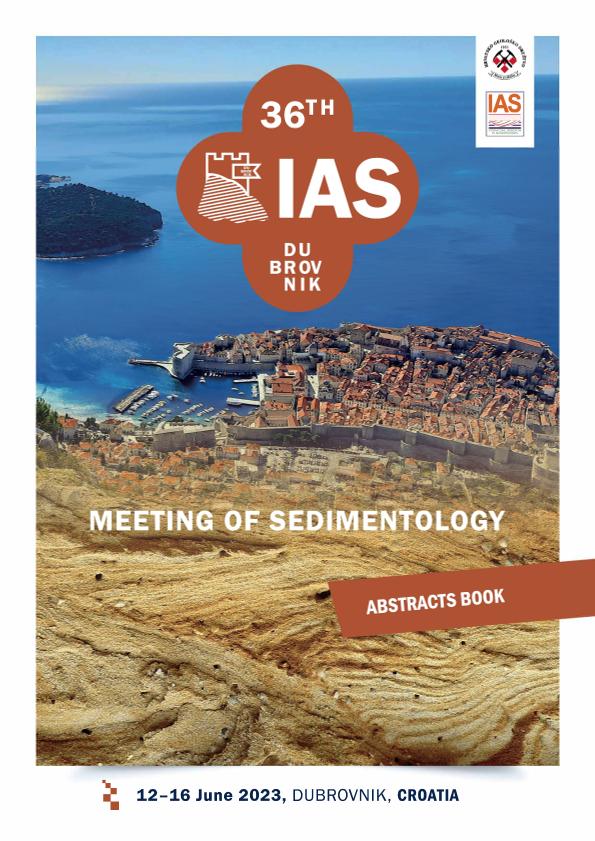Mostrar el registro sencillo del ítem
dc.contributor.author
Schwarz, Ernesto
dc.contributor.author
Remirez, Mariano Nicolas

dc.contributor.author
Veiga, Gonzalo Diego

dc.contributor.author
Isla, Manuel Fermín

dc.date.available
2024-03-04T15:22:39Z
dc.date.issued
2023
dc.identifier.citation
Large-scale reconstruction of the Early Cretaceous Neuquen Sea (SW Gondwana): unravelling key parameters for characterization and classification of Epeiric seas; 36th International Meeting of Sedimentology; Dubrovnik; Croacia; 2023; 388-388
dc.identifier.isbn
978-953-6907-79-3
dc.identifier.uri
http://hdl.handle.net/11336/229241
dc.description.abstract
.Epeiric seas were common in deep times, but modern analogues are rare. Reconstruction of ancient examples is usually limited by available data, which also hampers the conceptualization of their variability and key controlling parameters. In this study we summarize and integrate a large stratigraphic dataset of a relatively small, semi-restricted Cretaceous epeiric sea in SW Gondwana to reconstruct oceanographic connection with adjacent ocean through time, areal distribution of sediments entering the marine basin, and sediment dispersal pathways within it. The Valanginian–Hauterivian study interval represents an exceptional record of continental and marine sediments deposited in the Neuquén Sea, semi-connected with the proto-Pacific Ocean across a volcanic arc. This interval is organized in three transgressive–regressive sequences (Lower, Middle, and Upper) defined by linked depositional systems, macrobenthic bioevents, and stratal patterns. Paleogeographic reconstructions show a consistent E–W proximal–distal depositional trend and a major fluvial system located in its SE apex. Dispersal pathways within the distal marine settings allow defining a non-uniform, along-depositional strike scenario, with a locus of siliciclastic deposition westwards of a major deltaic system and increasing carbonate contribution away from it. The degree of connection between the Neuquén Sea and the ocean varies over time with a probable peak near the base of Middle Sequence. Key attributes reconstructed for the Neuquén Sea, namely significant restriction, major sediment supply in one apex, and asymmetric distribution of sediments in the distal settings, are comparable with configurations observed in the present Persian Gulf and Adriatic Sea. Comparisons with ancient examples (e.g., Western Interior Sea or North American Seaway) suggest contrasting paleogeographic models, but at the same time reinforce the value of these key parameters to produce better discrimination between the possible spectrum of epeiric seas. In that sense, building classifications for epeiric seas based on these parameters (size, degree of ocean connection, sediment entry points, and sediment pathways), appears as the next challenge for better reconstructions of these environments worldwide.
dc.format
application/pdf
dc.language.iso
eng
dc.publisher
International Association of Sedimentologists
dc.rights
info:eu-repo/semantics/openAccess
dc.rights.uri
https://creativecommons.org/licenses/by-nc-sa/2.5/ar/
dc.subject
STRATIGRAPHY
dc.subject
EPEIRIC SEAS
dc.subject
NEUQUEN BASIN
dc.subject
CRETACEOUS
dc.subject.classification
Geología

dc.subject.classification
Ciencias de la Tierra y relacionadas con el Medio Ambiente

dc.subject.classification
CIENCIAS NATURALES Y EXACTAS

dc.title
Large-scale reconstruction of the Early Cretaceous Neuquen Sea (SW Gondwana): unravelling key parameters for characterization and classification of Epeiric seas
dc.type
info:eu-repo/semantics/publishedVersion
dc.type
info:eu-repo/semantics/conferenceObject
dc.type
info:ar-repo/semantics/documento de conferencia
dc.date.updated
2024-02-22T13:43:27Z
dc.journal.pagination
388-388
dc.journal.pais
Croacia

dc.journal.ciudad
Dubrovnik
dc.description.fil
Fil: Schwarz, Ernesto. Consejo Nacional de Investigaciones Científicas y Técnicas. Centro Científico Tecnológico Conicet - La Plata. Centro de Investigaciones Geológicas. Universidad Nacional de La Plata. Facultad de Ciencias Naturales y Museo. Centro de Investigaciones Geológicas; Argentina
dc.description.fil
Fil: Remirez, Mariano Nicolas. Consejo Nacional de Investigaciones Científicas y Técnicas. Centro Científico Tecnológico Conicet - La Plata. Centro de Investigaciones Geológicas. Universidad Nacional de La Plata. Facultad de Ciencias Naturales y Museo. Centro de Investigaciones Geológicas; Argentina. George Mason University; Estados Unidos
dc.description.fil
Fil: Veiga, Gonzalo Diego. Consejo Nacional de Investigaciones Científicas y Técnicas. Centro Científico Tecnológico Conicet - La Plata. Centro de Investigaciones Geológicas. Universidad Nacional de La Plata. Facultad de Ciencias Naturales y Museo. Centro de Investigaciones Geológicas; Argentina
dc.description.fil
Fil: Isla, Manuel Fermín. Consejo Nacional de Investigaciones Científicas y Técnicas. Centro Científico Tecnológico Conicet - La Plata. Centro de Investigaciones Geológicas. Universidad Nacional de La Plata. Facultad de Ciencias Naturales y Museo. Centro de Investigaciones Geológicas; Argentina
dc.relation.alternativeid
info:eu-repo/semantics/altIdentifier/url/https://iasdubrovnik2023.org/
dc.conicet.rol
Autor

dc.conicet.rol
Autor

dc.conicet.rol
Autor

dc.conicet.rol
Autor

dc.coverage
Internacional
dc.type.subtype
Reunión
dc.description.nombreEvento
36th International Meeting of Sedimentology
dc.date.evento
2023-06-12
dc.description.ciudadEvento
Dubrovnik
dc.description.paisEvento
Croacia

dc.type.publicacion
Book
dc.description.institucionOrganizadora
Croatian Geological Society
dc.description.institucionOrganizadora
International Association of Sedimentologists
dc.source.libro
Abstracts Book: 36th International Meeting of Sedimentology
dc.date.eventoHasta
2023-06-16
dc.type
Reunión
Archivos asociados
